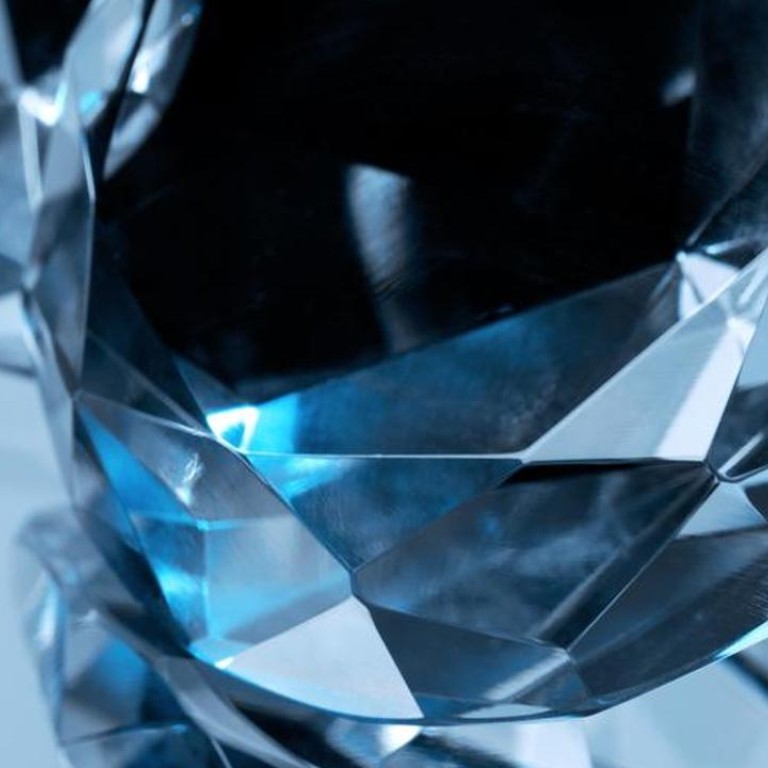
Diamonds are for error: Chinese team clear ‘error’ hurdle to pave way for quantum computer that could make geniuses of us all
Scientists create world’s first fault-tolerant quantum computer in piece of precious mineral, say nation could have first one for commercial use within a decade.
Chinese scientists have built the world’s first fault-tolerant quantum computer in a piece of diamond and it will eventually be able to find - in the blink of an eye - passwords and other encrypted information that regular computers need years or decades to uncover, they said.
As such, the breakthrough, coupled with other technological advances over the last few years by companies such as IBM, led the team to make a bold and unsettling prediction: The nation’s first quantum computer should be ready for commercial use within a decade.
These are able to sort through huge reams of data to solve complex problems at a much faster rate than traditional computers, but their development has been handicapped by key errors they encounter.
(when bits change values due to interference) and phase errors (here, the sign of the phase relationship between 0 and 1 can flip when in a superposition state).
Regular computers contend with errors of the first kind but not the second, which are harder to detect and fix.
It was previously not considered possible to deal with both errors at the same time, something required for quantum computers to work properly.
The IBM team solved this problem using a phenomenon called entanglement, by which qubits can nearly instantaneously share information with other qubits.
Qubits are the main data components used in quantum computers. Whereas other machines see information in the form of bits that carry a value of 1 or 0, quantum computers see qubits - single atoms that can be 1, 0 or both at the same time due to a phenomenon known as quantum superposition.
READ MORE: New ‘phantom particle’ discovered by Chinese scientists could mean you only need to charge your smartphone once a year
This is what enables them to conduct many more calculations simultaneously than binary computers.
Now a group of local researchers led by Professor Du Jiangfeng at the University of Science and Technology of China have created a new system which, they say, can continue operating properly in the event of the failure of one or more qubits.
They published their findings in a recent paper in the journal Nature Communications.
Their quantum computing system can operate at room temperature because it is hosted in parts of a diamond lacking in nitrogen, they reported.
While such systems would ordinarily require a climate-controlled lab, the team’s finding paves the way for such computers to operate safely in regular buildings, they said.
Quantum computers were considered a distant dream by most scientists as recently as two or three years ago. Many expected it would take decades before they could be put to practical use due to the bewildering array of unsolved technical challenges.
One of these was the unstable nature of qubits, which can make their results unreliable. Other problems relate to the storage, transportation and manipulation of quantum data.
But a series of recent advances have sparked a new sense of optimism among the mainstream scientific community.
Some commercial systems built to exploit properties of quantum mechanics for special calculations have been developed and purchased by high-profile users such as Lockheed Martin and Los Alamos National Laboratory in the United States.
Prototypes of “quantum chips” have been developed using various platforms including superconductive materials and even traditional silicon by scientists at universities and companies such as IBM.
The Chinese team opted to use diamond.
Pan Jianwei, a lead scientist in the field of quantum computing who works at the Chinese Academy of Sciences, told local media earlier this year that the academy was hoping to build a quantum super computer in the next 10 to 15 years.
Such a computer has the potential to change the world by operating at speeds that are 10 quadrillion times faster than current super computers, Pan said.
If created, this would bestow on each Chinese citizen the “exclusive calculation power equivalent to several hundred million units of Tianhe-2,” he said, referring to the country’s fastest super computer.
The upbeat mood in this field has attracted many private Chinese investors.
READ MORE: Hong Kong start-up developing quantum computing solutions for banking and finance
In July, e-commerce giant Alibaba invested US$1 billion in Pan’s quantum super computer project in hope of exploiting the technology for commercial use, such as improving the performance and security of its cloud service.
The first goal of the joint venture was to build a 16-qubit system with a performance equivalent to that of Tianhe-2 by the end of this year.
The work by Du’s team has removed a major obstacle towards producing a quantum computer for practical use, according to Professor Yu Yang, a quantum computing scientist at Nanjing University’s School of Physics in eastern China’s Jiangsu province.
“We are now a step closer to bringing the quantum computer from science fiction to real life,” said Yu, who was aware of but not involved in the research.
Du’s team developed an ingenious method to reduce the noise plaguing the diamond-based system, which significantly improved the system’s reliability, they claimed.
But the work also revealed more challenges in the road ahead.
For instance, the fault-tolerant performance could only be achieved with one qubit. When two qubits were involved, the system’s reliability dropped significantly, they said.
It is crucial to maintain a high level of reliability as more qubits are added because these enhance the overall computing power.
The use of diamond as a host material also has its limits, Yu said, as many qubits would be needed to power quantum computers.
“This would be one ‘jewelry box’ most users couldn’t afford,” he said.

